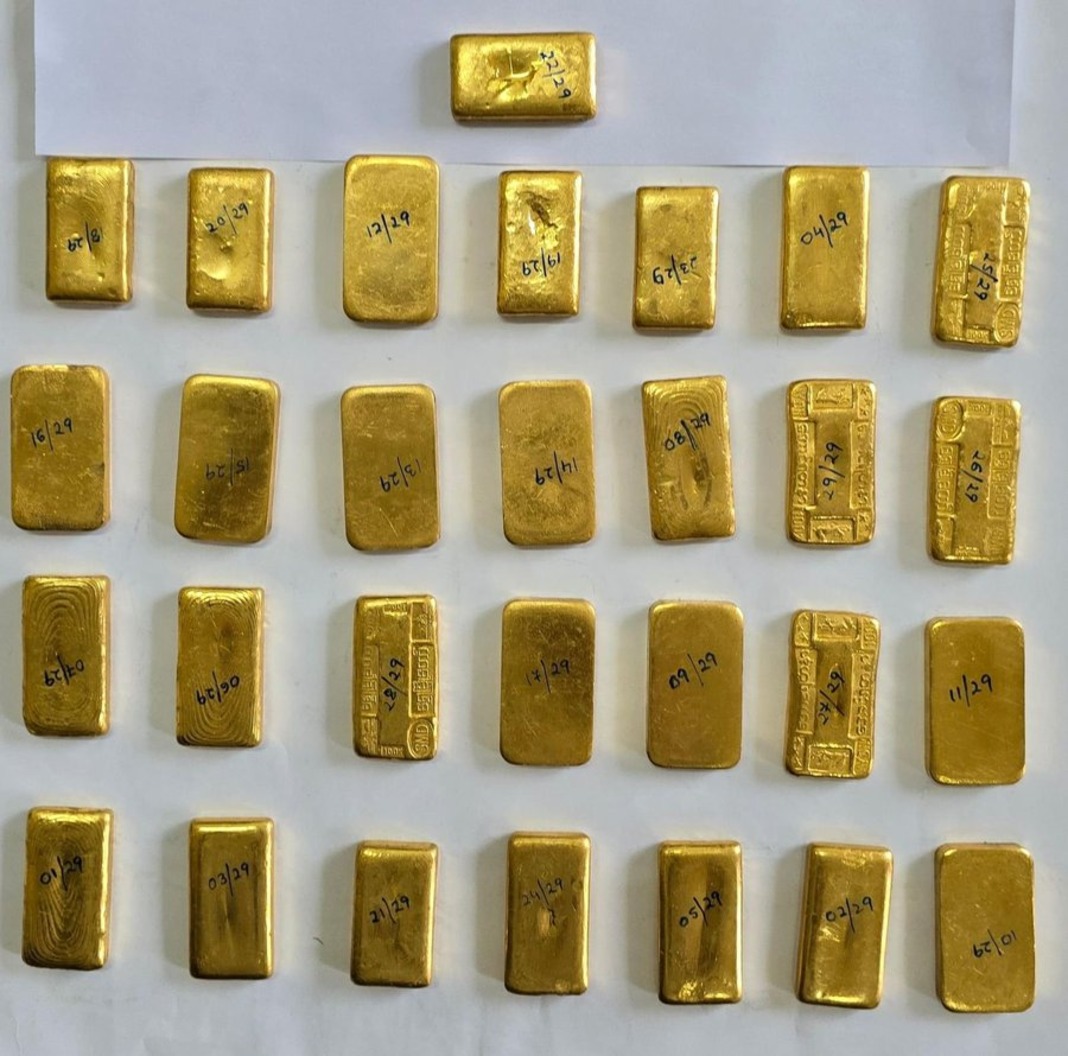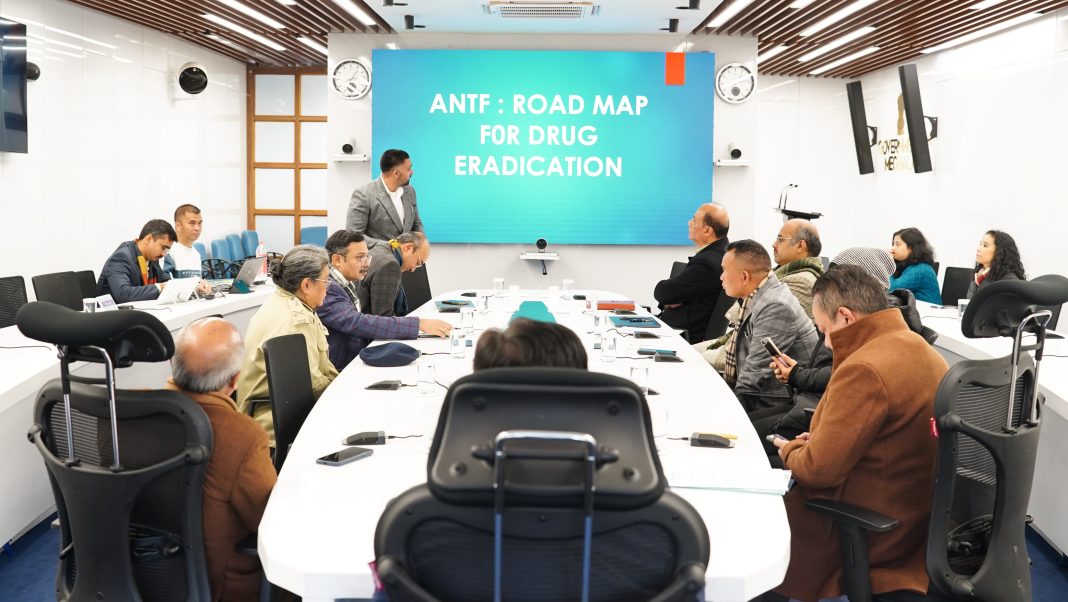Guwahati, Dec 9: Gold smuggling into India, particularly through its land borders with Myanmar, Bangladesh, and Nepal, has become a persistent and complex issue. According to the Smuggling in India report by the Directorate of Revenue Intelligence (DRI), four northeastern states- Arunachal Pradesh, Nagaland, Manipur, and Mizoram are pivotal in this illicit trade.
“Smuggling syndicates exploit the difficult terrain and porous borders, articularly using established routes such as Tamu-Moreh and Zokhawthar. Gold trafficked from Myanmar often passes through key transit points like Muse, Ruili, and Mandalay before entering Indian territory. Manipur and Mizoram, due to their proximity to the border, have become hotspots for gold trafficking, evidenced by frequent seizures by DRI,” the report stated.
DRI has intensified efforts to curb the flow of illicit gold which makes its way into mainland India through the Siliguri Corridor, a critical chokepoint.
In a major operation, codenamed “Operation Rising Sun” on March 12, 2024, DRI dismantled a large smuggling syndicate operating from Guwahati. The operation led to the seizure of 22.74 kg of gold, Rs 13 lakh in cash, 21 vehicle keys, 30 mobile phones, and the arrest of six individuals. Further operations in Assam, Bihar, and Uttar Pradesh resulted in a total seizure of 61.08 kg of gold, valued at Rs 40.48 crore, and the arrest of 12 individual.
The report also stated that Siliguri Corridor, a stretch of land extending only about 20-22 km is the sole geo-political and geo-economic corridor that connects Northeast India to the rest of India. Its critical role from an anti-smuggling perspective is evident from the fact that this relatively small area accounts for about 4% (Rs 30 Cr. approx.) of the total seizures of DRI. Furthermore, as illustrated in the graph above, seizures in Siliguri have occurred consistently throughout the year, underscoring its status as a hotspot for smuggling activities.
Many deeply rooted smuggling networks span the borders between West Bengal and Bangladesh, underscoring the persistent and pervasive nature of illegal trade in the region, the report also stated.
Recently, a tunnel used for smuggling gold and other contraband was identified along the international border between India and Bangladesh. Smuggled gold from Bangladesh is typically routed to cities like Kolkata, where it is either sold directly or distributed across India. Seizures in West Bengal frequently uncover substantial quantities of gold, underscoring the smuggling sensitivity in this region.
“Similarly, Nepal has emerged as another critical transit point for gold smuggling into India. Smuggling routes are often tied to the transportation networks, with many cases involving carriers moving gold from border areas into major Indian cities via train or road. Once smuggled gold enters India, it is typically re-melted and crafted into jewellery,” the report further stated.
“This allows for the illicit gold to integrate into the legal market, further complicating enforcement efforts. The smuggling networks operating across these borders are highly organized and sophisticated. They use local carriers, vehicles with hidden compartments, and illegal financial networks like hawala to facilitate the illegal trade. Vehicles, including private cars, trucks, and even trains, are commonly used to transport smuggled gold. Smugglers frequently conceal gold in specially designed cavities within the chassis of vehicles or hidden compartments in electronic devices,” it said.
Some operations also involve the use of river routes, where gold is smuggled across bodies of water before being moved further into India
Gold smuggling in India typically follows a “hub and spoke” model, where the contraband reaches central hub locations after being smuggled into the country and is then distributed to various destinations. DRI has been at the forefront of developing and disseminating intelligence on gold smuggling, successfully unearthing the modus operandi used by smugglers. DRI has played a crucial role in dismantling major gold smuggling syndicates and apprehending key individuals involved in these activities. During the financial year 2023-24, DRI seized 1319 kg of gold, with land route contributing 55% of the seizures and air route contributing around 36%.
Additionally, DRI has shared actionable intelligence with Customs field formations, leading to significant gold seizures by those units as well. Gold smuggling into India through its land borders, particularly from Myanmar, Bangladesh, and Nepal, remains a persistent and complex issue. Air routes into India also remain a prominent method used by smugglers, with Middle East and Southeast Asian countries traditionally being the major points of origin. Recently, airports in certain African and Central Asian countries have also emerged as key locations for smuggling operations. Gold smuggling in India has evolved with smuggling syndicates now employing “mules” with diverse profiles, including foreign nationals and families, alongside insiders. Smuggling syndicates even leverage international departure gates, where airport workers and other staff collude in smuggling gold from transit passengers. There has been a noticeable increase in the number of carriers employed by smuggling syndicates to transport smaller quantities of gold, reducing potential losses in case of interception by law enforcement agencies.
The report added that to combat the growing menace of gold smuggling, DRI has intensified its surveillance and enforcement efforts. Major operations conducted by DRI often in association with other enforcement agencies like the BSF have led to substantial seizures of smuggled gold and the dismantling of organized smuggling syndicates, the report added.
The northeast Indian states have become pivotal in the smuggling of gold into India, with Myanmar, Bangladesh, and Nepal serving as key.




